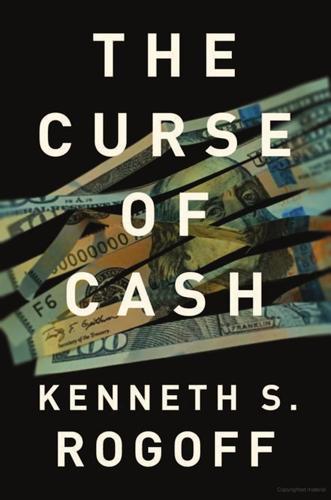
The Curse of Cash
by
Kenneth S Rogoff
Published 29 Aug 2016
Over the years, however, the constant evolution of new transaction technologies has whittled down the role of cash in the legal economy until it remains important for small transactions but has become increasingly vestigial in medium-sized and large transactions. This point is brought into sharp relief by the ever rising and ever more dominant share of large-denomination notes in the currency supply of advanced countries. The $100 bill and the 500-euro note, for example, are relatively unimportant in everyday retail transactions. Yet they dwarf small bills in their share of currency supplies in the United States and Europe. The evidence was already overwhelming two decades ago, when I first began to argue that retaining large-denomination notes was penny-wise and pound-foolish; the likely benefits from marginally increased tax receipts and marginal reductions in crime almost certainly outweigh the lost seigniorage revenues from printing paper currency.
…
By some estimates, there are as many as 300,000–400,000 French citizens living in London, leading London’s mayor, Boris Johnson, in 2013 to observe that he was mayor of the sixth-largest French city.7 For the United Kingdom, it certainly will be much easier to phase out paper currency (soon to be plastic currency) in coordination with Europe. However, controls of the type SOCA and the Treasury have already implemented could easily be extended to other large-denomination foreign notes. EMERGING MARKETS Most emerging markets would likely be large net beneficiaries if advanced countries phased out their own paper currencies, especially the large-denomination notes so prevalent in corruption and crime. But for most, it is far too soon to contemplate phasing out their own currencies. For one thing, most emerging markets are not anywhere near the zero bound on interest rates; many are working hard to keep inflation rates in single digits, and most are forced to pay risk premiums on their bonds.
…
Back in the early 1980s, monetary theorist Neil Wallace argued that the only reason the government gets away with issuing non-interest-bearing fiat money is because the government makes it difficult to use interest-bearing government debt for transaction purposes. For one thing, the government issues interest-bearing bonds and notes only in large denominations. If three-month Treasury bills paid market interest and if they came in, say, $100 denominations, they might even be preferred to cash for some transactions. (Something akin to this occurred in the United States during the War of 1812, when small Treasury bills bearing interest were sometimes used as currency.1) Second, even if the government issues bills and bonds only in large denominations, it has to be careful to prohibit private financial firms from issuing interest-bearing paper money–like substitutes that are 100% backed by government bonds.
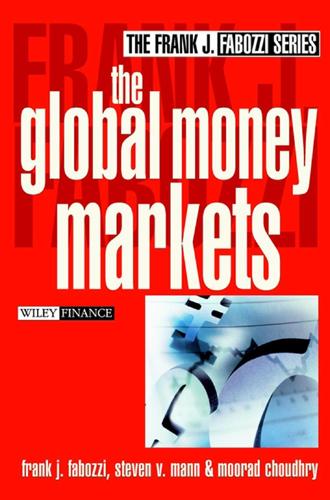
The Global Money Markets
by
Frank J. Fabozzi
,
Steven V. Mann
and
Moorad Choudhry
Published 14 Jul 2002
This innovation was critical in helping depository institutions increase the amount of funds raised in the money market. It also ushered in a new era of competition among depository institutions. There are two types of negotiable CDs. The first is the large-denomination CD, usually issued in denominations of $1 million or more. The second type is the small-denomination CDs (less than $100,000) which is a retail-oriented product. Our focus here is on the large-denomination negotiable CD with maturities of one year or less and we refer to them as simply CDs throughout the chapter. The largest group of CD investors is investment companies, with money market mutual funds purchasing the lion’s share.
…
See Integrated investment banks artificial barriers, 70 group, 53 Investment grade rating, 182 Investors, flexibility, 54 Invoice price, 214–215 IRSB, 254 ISDA. See International Swap Dealers Association ISSUE SIZE, 63 Issues, underwriting, 84 Jackson National Life, 99 JCPenney, 192 Junior tranches, 182–183 Kambhu, John, 43 King & Shaxson Bond Brokers Limited, 139 Knight-Ridder, 35 Kuwait, invasion, 38 Large-denomination CDs, 86 322 Large-denomination negotiable CDs, 85–90 Lazards, 139 Lee, Wanda, 76 Legal structures, 187 Lending lines, 262 Letter of credit (LOC), 96 Level I PAC bond, 178 Level II PAC bond, 178 Level III PAC bond, 179 Leveraged inverse floater, 103 Leveraging, 131 Liabilities. See Current liabilities; Long-term liabilities; Noninterest-bearing liabilities Liberty Brokerage Inc., 34 LIBID.
…
These institutions are simultaneously among the biggest buyers and issuers of money markets instruments. Moreover, there are certain short-term debt instruments peculiar to financial institutions such as certificates of deposits, federal funds, bankers acceptances, and funding agreements. These instruments are the focus of this chapter. T LARGE-DENOMINATION NEGOTIABLE CDS A certificate of deposit (CD) is a financial asset issued by a depository institution that indicates a specified sum of money that has been deposited with them. Depository institutions issue CDs to raise funds for financing their business activities. A CD bears a maturity date and a specified interest rate or floating-rate formula.
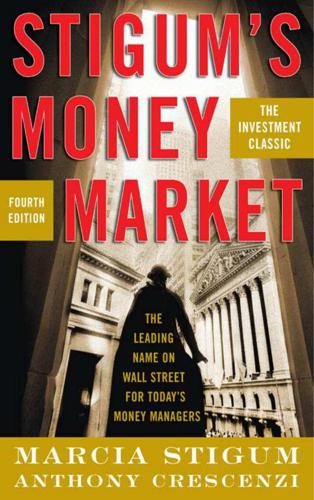
Stigum's Money Market, 4E
by
Marcia Stigum
and
Anthony Crescenzi
Published 9 Feb 2007
The maximum maturity for which commercial paper may be sold is 270 days, since paper with a longer maturity must be registered with the Securities and Exchange Commission (SEC), a timely and expensive procedure. In practice, very little 270-day paper is sold, and most paper sold is in the range of 90 days and under. The average maturity for commercial paper is 45 days. By regulation, commercial paper is sold in large denominations, which prevents investment by most individuals. However, individual investors hold large amounts of commercial paper through money market mutual funds. Proceeds received from commercial paper issuance must be used to finance “current transactions,” which include the funding of operating expenses and the funding of current assets such as receivables and inventories.
…
For example, higher-yielding CDs sometimes have “call” features that enable issuing banks to terminate the CD after a specified period of time. Callable CDs are more likely to be called when interest rates decline, because the issuing banks can then reissue the CDs at lower rates. Small denomination CDs are sold in denominations smaller than $100,000. Large denomination, or “jumbo,” CDs are sold in denominations over $100,000, though they are normally sold in $1 million units. CDs can have any maturity longer than 14 days, and some 5- and even 7-year CDs have been sold (these pay interest semiannually). Most CDs, however, have an original maturity of 1 to 12 months though some have maturities of five years or more.
…
However, by interpretations that weren’t challenged, banks were permitted to underwrite and deal in CDs and BAs. The grounds for these interpretations were that: (1) such paper is not securities for the purposes of Glass-Steagall and (2) underwriting such paper was not the sort of bank activity that Glass-Steagall intended to prohibit. Note there were no large-denomination, negotiable CDs until 1961, decades after Glass-Steagall was written in 1933. The agency provision of Glass-Steagall enabled banks to do private placements in which they sold to a limited group of institutional investors in large minimum amounts corporate stocks, bonds, and other securities.
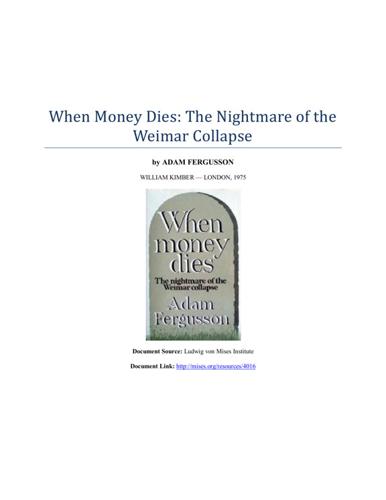
When Money Dies
by
Adam Fergusson
Published 25 Aug 2011
The full enormity of Havenstein's policies was duly revealed in the speech he made — published immediately afterwards — to a Council of State on August 17. 'The Reichsbank,' he said, with evident pride and satisfaction, 'today issues 20,000 milliard marks of new money daily, of which 5,000 milliards are in large denominations. In the next week the bank will have increased this to 46,000 milliards daily, of which 18,000 milliards will be in large denominations. The total issue at present amounts to 63,000 milliards. In a few days we shall therefore be able to issue in one day two-thirds of the total circulation.' How he would bring all this paper into circulation was the least of the questions raised.
…
To the reproach that he had not refused to discount the government's bills, he replied that 'Even a threat by the Bank would have been a useless gesture,' adding that if the Bank's discount rate had been raised to meet the depreciation such a policy would have harmed all branches of industry -and would have had a 'catastrophic' effect, too, on prices. 102 Havenstein's speech, made in the closing days of August to the central committee of the Reichsbank, ended with a description of what he still regarded as the most serious task in hand: 'The whole extraordinary depreciation of the mark has naturally created a rapidly increasing demand for additional currency, which the Reichsbank has not always been fully able to satisfy. A simplified production of notes of large denominations [including printing on one side only] enabled us to bring ever greater amounts into circulation. But these enormous sums are barely adequate to cover the vastly increased demand for the:means of payment, which has just recently attained an absolutely fantastic level, especially as a result of the extraordinary increases in wages and salaries.

The Price of Time: The Real Story of Interest
by
Edward Chancellor
Published 15 Aug 2022
An early visitor, the Jesuit priest Father Charlevoix, found that New Orleans consisted of ‘one hundred randomly situated huts, a large wooden store, and two or three houses unworthy of any French village’.20 The settlers faced a variety of illnesses, including ‘fevers, scurvy, dysentery, venereal diseases and leg ailments’.21 Around half of them perished or returned to Europe.22) The main stimulus for the bubble came from the Royal Bank’s printing press. Over the course of 1719, the amount of paper money in circulation increased by an estimated billion livres.23 The bank employed eight printers around the clock to crank out notes in large denominations. The most commonly issued note was worth 10,000 livres.24 The money-printing became so furious that the handwritten signature of the bank’s cashier had to be replaced by a printed impression (as on modern banknotes). Saint-Simon claimed that ‘the printing of shares and banknotes was actually delayed because the manufacturers could not supply paper fast enough!’
…
Robertson, Dennis, ‘Alternative Theories of Interest’, Economic Journal, 1937. Robertson, Dennis, ‘How do We Want Gold to Behave?’, in The International Gold Problem (London, 1932). Robinson, Joan, ‘The Rate of Interest’, Econometrica, 19 (2), April 1951: 92–111. Rogoff, Kenneth, The Curse of Cash: How Large-Denomination Bills Aid Crime and Tax Evasion and Constrain Monetary Policy (Princeton, 2017). Rogoff, Kenneth and Yang, Yuanchen, ‘Has China’s Housing Production Peaked?’, China and the World Economy, 21 (1), 2021. Röpke, Wilhelm, Crises and Cycles (London, 1936). Rosen, Daniel H. and Wright, Logan, ‘Credit and Credibility: Risks to China’s Economic Resilience’, Center for Strategic and International Studies, 3 October 2018.
…
Likewise, Bernanke in his talk ‘Asset Price “Bubbles” and Monetary Policy’ before the New York Chapter of the National Association for Business Economics (2002) ignores Japan’s experience in the 1980s and 1990s when arguing that central banks should focus on price stability rather than attempt to prick asset price bubbles. 15. Sidney Homer and Richard Sylla, A History of Interest Rates, 3rd edn (Hoboken, NJ, 1996), p. 385. 16. Ibid., p. 386. 17. Kenneth Rogoff, The Curse of Cash: How Large-Denomination Bills Aid Crime and Tax Evasion and Constrain Monetary Policy (Princeton, 2017), p. 119. 18. Robert Samuelson, The Great Inflation and Its Aftermath: The Transformation of America’s Economy, Politics, and Society (New York, 2008), p. 128. 19. Ibid., p. 132. 20. In an article entitled ‘Gold and Economic Freedom’ (1966), Greenspan wrote that the Gold Standard provided the only reliable balancing mechanism in the banking system.
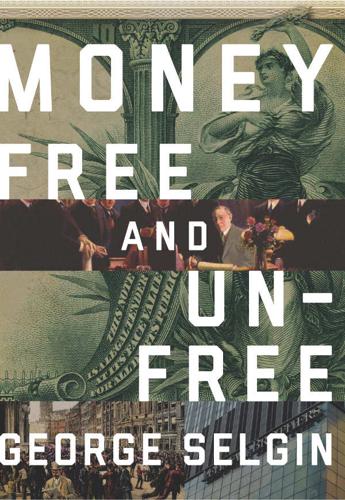
Money Free and Unfree
by
George A. Selgin
Published 14 Jun 2017
Higher-value coin from the same mints was mainly used in international markets (Cipolla 1956), where it competed head-on with foreign coin.9 Because the demand for high-value coins was much more elastic, a rational dictator would subject high-value coins to lower rates of seigniorage (less frequent debasement). Medieval European governments accordingly extracted less seigniorage from gold coin than from silver, and debasement of silver coins was much less frequent for large denominations than for small.10 Mints went to great lengths to preserve the quality of their “international” monies (monete grosse) even while ruthlessly debasing the locally used petty coins. The Spanish government, for example, took pains to preserve the metallic content of its silver coin, which by the late 15th century had become Europe’s (and the New World’s) most stable and coveted, while actively debasing the petty copper coinage that it produced as a local monopoly (Motomura 1994).
…
Because, apart from being the arrangement most familiar to the founders, owing to its long employment in the British Isles, bimetallism had the advantage of being capable of providing the nation with exchange media covering a wide range of desirable denominations with a minimum need for either bank-issued paper or token coins. Full-bodied gold coins would be too valuable to serve conveniently as anything other than money of fairly large denominations, while full-bodied silver coins would be suitable for smaller denominations, but not for larger ones. Though paper money and token coins might in contrast serve for all denominations, the former was anathema to at least some of the Founders, while the latter was at best a necessary evil, to be adopted only for those tiny denominations for which even silver wasn’t suitable, and even then with trepidation, owing to the risk (all too familiar from both British and colonial experience) of rampant counterfeiting.3 The first Coinage Act established a ratio of mint “prices” for gold and silver that made an ounce of gold worth 15 times as many dollars as an ounce of silver.
…
Their suspensions were eventually sanctioned, subject to varying conditions, by state authorities, allowing the banks in question to advance a substantial part of their still-considerable specie reserves to the Confederate Treasury, which arranged to pay for it with paper notes. Although the first such notes were for large denominations not intended to serve as currency, the Confederacy soon issued large amounts of smaller denomination paper that would serve as the region’s standard money until the North’s victory rendered it worthless. In the Union, Salmon P. Chase, Lincoln’s first secretary of the treasury, discovered upon taking office that the government had available “less than $2,000,000, all of which was appropriated ten times over” (Hammond 1957: 720).
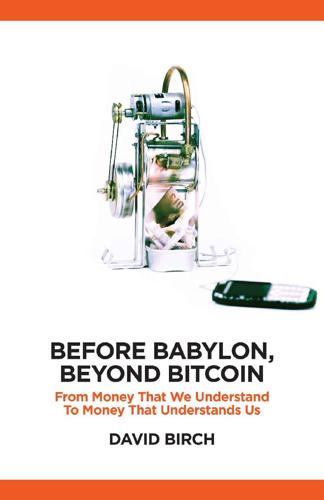
Before Babylon, Beyond Bitcoin: From Money That We Understand to Money That Understands Us (Perspectives)
by
David Birch
Published 14 Jun 2017
To build up a picture of the cashless economy we need to begin by looking at all of the issues set out here to build our understanding of the cashless economy and what it means for regulators, governments and national (and supranational) institutions. Let us therefore work through those issues individually. Electronic money issues. Crime Citi’s chief economist Willem Buiter has noted the odd conspiracy between finance ministries, central banks and organized crime (Buiter 2009): Large denomination bank notes are an especially scandalous subsidy to criminal activity and to the grey and black economies. There is no economic justification for $50 and $100 bank notes, let alone for the €200 and €500 bank notes issued by the ECB. The euro example is particularly noteworthy. Two-thirds of the euros in circulation are in the form of these €100, €200 and €500 notes, which I have never seen.
…
Roberds, W. 1998. The impact of fraud on new methods of retail payments. Economic Review, Q1. Robinson, J. 2014. BitCon: the naked truth about Bitcoin. Amazon Digital Services, 26 September, p. 149. Rogoff, K. S. 2017. International dimensions and digital currencies. In The Curse of Cash: How Large Denomination Bills Aid Tax Evasion and Crime and Constrain Monetary Policy (paperback edition). Princeton University Press. Rosner, M., and A. Kang. 2016. Understanding and regulating twenty-first century payment systems: the Ripple case study. Michigan Law Review 114(4), 648–681. Rugaard, M. 2014.
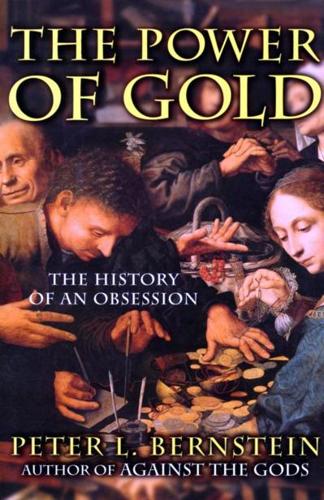
The Power of Gold: The History of an Obsession
by
Peter L. Bernstein
Published 1 Jan 2000
In 1875, the English economist Stanley Jevons observed that the £20 million in transactions that cleared the London Bankers' Clearing House each day would weigh about 157 tons if paid in gold coin "and would require eighty horses for conveyance."5 The density of gold means that even very small amounts can function as money of large denominations. Gold is almost as soft as putty. The gold on Venetian glasses was hammered down to as little as five-millionths of an inch-a process known as gilding. In an unusually creative use of gilding, King Ptolemy II of Egypt (285-246 Bc) had a polar bear from his zoo lead festive processions in which the bear was preceded by a group of men carrying a gilded phallus 180 feet tall.
…
When, in 1529, Francis I of France paid over 1.2 million escudos to Charles V of Spain to ransom his two sons, the process of counting and testing the coins took four months, during which time the Spaniards rejected forty thousand coins as below standard.14 In a later time, 1662, one hundred chests were required to handle the physical transfer of five hundred thousand large-denomination French coins!" Gold coins were so valuable in the Middle Ages that they did not circulate much among the common people.t For the most part, gold coins were used in transactions by merchants and traders involved in foreign trade, by tax collectors, by the retinue of the monarch himself, and, as we have already seen, by monarchs as a means of buying off enemies and ransoming friends and family members.
…
The guinea's consistent weight and fineness made such a vivid contrast with the rotten state of the silver coinage up to the Great Recoinage that people preferred to accept the guinea wherever possible. Bankers held it as reserves, tax collectors welcomed it in order to avoid the arguments about what a worn silver piece might be worth, and economic activity in England at that time had developed to a point where a large-denomination coin such as the guinea was no longer just an inconvenient curiosity. From the moment when Elizabeth I ascended to the throne in 1558 to the foundation of the Bank of England in 1694, a period of 136 years, the Mint had issued no more than £15 million in gold coinage, of which half was in guineas that appeared after 1663.
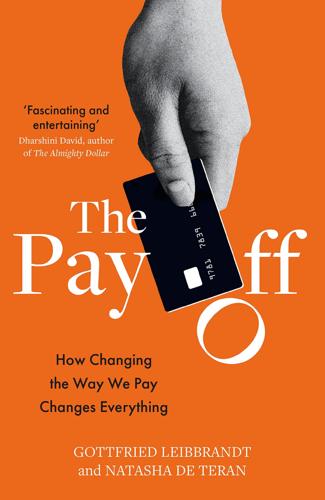
The Pay Off: How Changing the Way We Pay Changes Everything
by
Gottfried Leibbrandt
and
Natasha de Teran
Published 14 Jul 2021
Evidently, while the high-value notes are used to pay for drugs, an altogether different use is being found for low-value ones (see Table 1). Table 1. Attributes of different payment mechanisms from a criminal perspective. Economists have long pointed out the essential contradiction between governments having stringent anti-money-laundering regimes while printing large-denomination notes. Large notes are clearly convenient for those of a criminal persuasion: $1 million in single dollar bills weighs more than one tonne and has a volume of more than one cubic metre, but $1 million in $100 notes weighs about 10 kg (22 pounds) and fits neatly into a briefcase. In the even higher denomination €500 note, that same $1 million would weigh only 2 kg and fit in a small bag – or a large stomach.
…
Figures on global financial crime, lower estimate, taken from US Treasury (2018): https://home.treasury.gov/system/files/136/2018NMLRA_12-18.pdf; upper estimate taken from RAND Corporation’s annual survey: www.rand.org/news/press/2019/08/20.html For cocaine on bank notes, see: www.theguardian.com/world/2009/aug/17/cocaine-dollar-bills-currency-us For large denomination bank notes and their use in the underground economy, see: K.S. Rogoff (2016). The Curse of Cash. Princeton, NJ: Princeton University Press. Figures on gold taken from the World Gold Council (www.gold.org) Chapter 5 For the ‘war on cash’, see: ‘Why elites are winning the war on cash’, UK Uncensored, October 2019 (https://ukuncensored.com/why-elites-are-winning-the-war-on-cash/); https://dailyreckoning.com/elites-winning-war-cash/ Willem Buiter’s quote is taken from: W.

Fixed: Why Personal Finance is Broken and How to Make it Work for Everyone
by
John Y. Campbell
and
Tarun Ramadorai
Published 25 Jul 2025
Goetzmann, Money Changes Everything: How Finance Made Civilization Possible (Princeton University Press, 2017). We briefly discuss contemporary payments systems in chapter 8. 9. Recent examples that illustrate the economic impact of payments system disruptions include the Indian government’s 2016 demonetization (withdrawal from circulation of large-denomination banknotes), and the exclusion of Russia from the international payments system after the 2022 invasion of Ukraine. See Amartya Lahiri, “The great Indian demonetization,” Journal of Economic Perspectives 34, no. 1 (2020): 55–74; and Gabriel Chodorow-Reich, Gita Gopinath, Prachi Mishra, and Abhinav Narayanan, “Cash and the economy: Evidence from India’s demonetization,” Quarterly Journal of Economics 135 (2020): 57–103. 10.
…
See, for example, Anna Hammarberg, “Cashless society,” January 10, 2020, https://www.business-sweden.com/insights/articles/cashless-society/. 40. Gabriel Chodorow-Reich, Gita Gopinath, Prachi Mishra, and Abhinav Narayanan, “Cash and the economy: Evidence from India’s demonetization,” Quarterly Journal of Economics 135 (2020): 57–103. See also Kenneth Rogoff, The Curse of Cash: How Large-Denomination Bills Aid Crime and Tax Evasion and Constrain Monetary Policy (Princeton University Press, 2017). 41. Raymond Fisman, Daniel Paravisini, and Vikrant Vig, “Cultural proximity and loan outcomes,” American Economic Review 107 (2017): 457–492, show evidence from a large Indian bank that being randomly matched to a loan officer of the same religion and caste increases the likelihood of a prospective borrower getting a loan.

9Tail Fox
by
Jon Courtenay Grimwood
Published 19 Oct 2005
When this bit of the plan was done, Bobby was going to buy some toys of his own, starting with a bike even bigger than the one belonging to Sanchez. He grinned. SERGEANT BOBBY ZHA husband, father and officer A good man … Bobby began with the hell banknotes, large denomination, because hell banknotes were always large denomination. What was the point of burning small notes when no one knew what things cost on the other side? After the notes, Bobby picked up the car, making sure he held it so Sanchez could get a good look at what he was about to burn. The kid had done him proud. Made from rice-paper and split bamboo, the car was quite obviously an SFPD cruiser, spray-painted in regulation colours and with a uniformed driver inside.
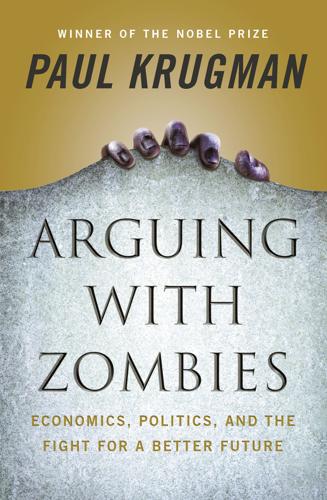
Arguing With Zombies: Economics, Politics, and the Fight for a Better Future
by
Paul Krugman
Published 28 Jan 2020
Yet dollar cash holdings have actually risen as a share of G.D.P. since the 1980s—a growth entirely accounted for by $50 and $100 bills. Now, large-denomination notes aren’t regularly used for payments—in fact, many stores won’t accept them. So what’s all that cash-holding about? We all know the answer: tax evasion, illicit activity, etc. And much of that is outside the U.S., with estimates suggesting that foreigners hold more than half of U.S. currency. Clearly, cryptocurrencies are in effect competing for some of the same business: very few people are using Bitcoin to pay their bills, but some people are using it to buy drugs, subvert elections, and so on. And the examples of both gold and large-denomination banknotes suggest that this kind of demand could support a lot of asset value.

Vagabonding: An Uncommon Guide to the Art of Long-Term World Travel
by
Rolf Potts
Published 24 Dec 2002
In countries where black-market exchange rates are preferable, try to make your transaction at a fixed business (hotels and jewelry stores are common for this) instead of a public space. Make sure you agree on a rate, count the dealer’s cash before you hand over yours, and don’t accept sailed or torn bills. In countries with weak currency, ask for large-denomination bills, as massive piles of small bills are hard to count. If at any point your black-marketeer begins to act suspicious (for instance, by making unusual requests or acting aggressive), exercise your right to walk away. • Avoid the urge to make too many of your on-the-ground transportation arrangements at once, as this will stunt your spontaneity.
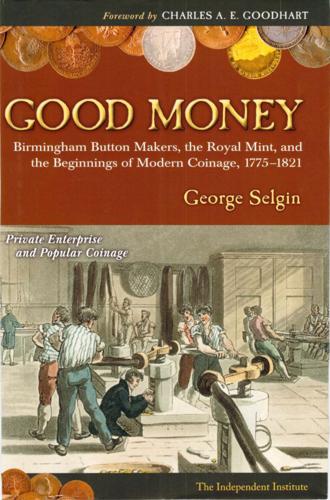
Good Money: Birmingham Button Makers, the Royal Mint, and the Beginnings of Modern Coinage, 1775-1821
by
George Anthony Selgin
Published 13 Jul 2008
Mint prices and equivalents for silver and gold were reckoned in terms of the troy pound of 5,760 troy grains, which replaced the mint (or Tower) pound of 5,400 troy grains in 1526. 14 GOOD MONEY 1. strike both large- and small-denomination coins from the standard metal, with the coins' weights corresponding to their face values; 2. resort to bimetallism, with low-denomination coins made from the less valuable metal, and large-denomination coins made from the more valuable one; or 3. issue avowedly fiduciary or token small-denomination coins, on government account. 21 Each option had its drawbacks. 22 Under the first option, if the standard metal was sufficiently valuable, coins of lower denominations would be too small to be practical, as happened with Great Britain's quarter guineas.
…
A still more egregious case was that of the silver farthings the Royal Mint issued in 1464. Weighing only three troy grains each, these were "lost almost as fast as they were coined" (Snelling 1766, preface). The standard metal could, of course, be one from which convenient small-denomination coins might be made; but then large-denomination coins of the same metal would end up being too bulky. A bimetallic system might have avoided the problem of undersized or oversized coins. 23 But it suffered from its tendency to give effect to Gresham's law, with one metal alone being taken to the mint for coining and with coins of the other metal being clipped, filed, sweated, or melted.

The One-Minute Workout
by
Martin Gibala
Published 5 Jan 2017
The role of lactic acid formation in fatigue is actually quite a controversial topic that could be the focus of a separate chapter or an entire book. For our purposes here, suffice it to say that anaerobic glycolysis is a limited capacity system. By far, the most efficient way to supply energy is through a process called oxidative metabolism, which involves the use of oxygen to burn fuels such as sugars and fats—the large-denomination bills in your wallet. While slower than the other two processes, oxidative metabolism provides the capacity to utilize many different fuels. The other nice thing about it is that, given adequate fuel availability, the capacity is almost limitless. Oxidative metabolism really is an ingenious process.
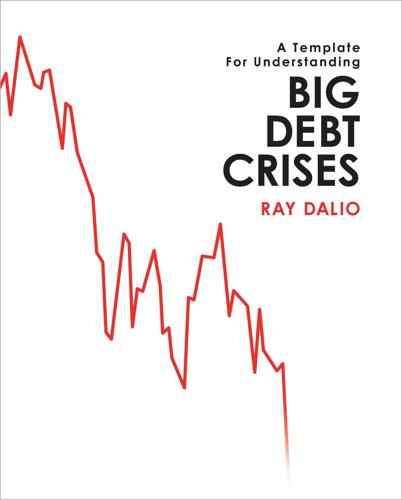
Big Debt Crises
by
Ray Dalio
Published 9 Sep 2018
During periods of tightening interest rates, the Federal Reserve also raised the reserve requirements in 1966–69, 1973, and 1979–80.32 Eventually, new funding instruments were invented to continue lending and bypass the reserve requirement. These included commercial paper, eurodollars, repurchase agreements, and large-denomination certificates of deposits.33 In 1969, the Federal Reserve attempted to address the loopholes that were enabling banks to skirt the reserve requirements. New bank borrowing from overseas branches was capped at 10%; this was done to stop banks from borrowing Eurodollars through their overseas branches (which were not subject to reserve requirements).
…
Additionally, the Fed set a 10 percent limit on assets sales by banks to their overseas branches.34 In 1970, the limits on both borrowing from and selling assets to overseas branches were increased to 20 percent. However, in 1973, these requirements were both lowered down to 8 percent. This was the same requirement as was in place for large-denomination certificates of deposits.35 In the late 1960s, the Federal Home Loan Bank Board (FHLBB) used reserve requirements to affect mortgage lending. The FHLBB reduced requirements when savings declined, thereby increasing liquidity in mortgage lending, and raised requirements when lending was high, or liquidity already abundant.36 As part of the Paul Volcker’s effort to rein in inflation, the Federal Reserve increased interest rates and reserve requirements in October 1979.
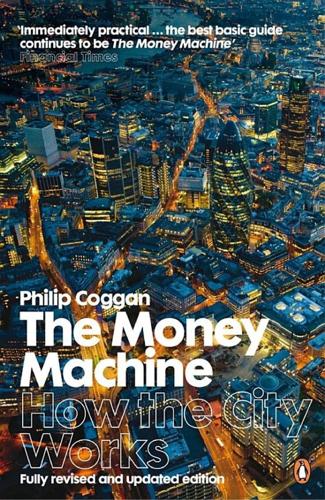
The Money Machine: How the City Works
by
Philip Coggan
Published 1 Jul 2009
Premium bonds are another form of tax-free investment open to the individual investor but the chances of getting any return at all are fairly small. In early 1993, the government revamped the scheme increasing the top prize to £1 million in an attempt to compete with the National Lottery. The yield on the fund varies with the level of interest rates. The government also issues long-term bonds in large denominations, known as gilts. These can be bought through a stockbroker. Unlike most of the other investments we have so far described, gilts offer the chance of capital gain. As we saw in Chapter 2, the prices of bonds move up and down in inverse fashion to the level of interest rates. So, it is possible to buy a gilt at £80 one year and sell it the next at £100 and earn interest in the process.
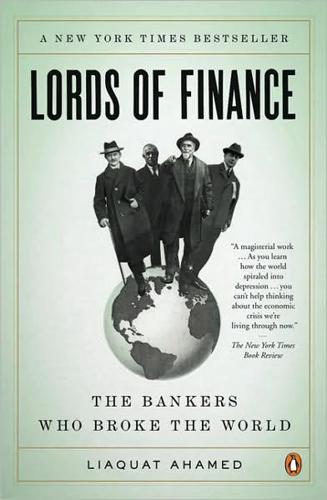
Lords of Finance: The Bankers Who Broke the World
by
Liaquat Ahamed
Published 22 Jan 2009
He began arguing that the inflation had nothing to do with him, that he was a passive bystander to the whole process, that his task was simply to make enough money available to grease the wheels of commerce, and if business required a trillion more marks, then it was his job to make sure they were run off the presses and efficiently distributed around the country. On August 17, 1923, he delivered his annual report on economic conditions before the Council of State:The Reichsbank today issues 20,000 milliard marks of new money daily, of which 5,000 milliards are in large denominations. In the next week the bank will have increased this to 46,000 milliards daily, of which 18,000 milliards will be in large denominations. The total issue at present amounts to 63,000 milliards. In a few days we shall therefore be able to issue in one day two-thirds of the total circulation. Here was the president of the Reichsbank, whose principal obligation was supposed be the preservation of the value of the currency, proudly proclaiming to a group of parliamentarians that he now had the capacity to expand the money supply by over 60 percent in a single day and flood the country with even more paper.
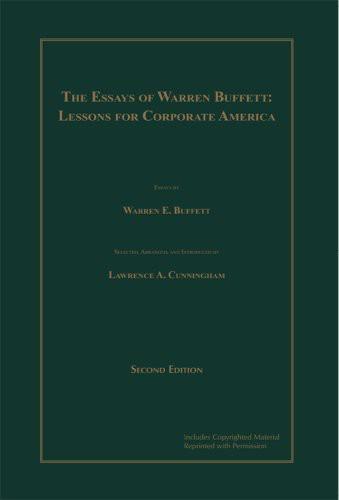
The Essays of Warren Buffett: Lessons for Corporate America
by
Warren E. Buffett
and
Lawrence A. Cunningham
Published 2 Jan 1997
If current interest rates are, say, only 6% or 7% when these coupons come due, the holder will be unable to compound his money over the life of the bond at the advertised rate. For pension funds or other investors with long-term liabilities, "reinvestment risk" of this type can be a serious problem. Savings Bonds might have solved it, except that they are issued only to individuals and are unavailable in large denominations. What big buyers needed was huge quantities of "Savings Bond Equivalents." Enter some ingenious and, in this case, highly useful investment bankers (led, I'm happy to say, by Salomon Brothers). They created the instrument desired by "stripping" the semi-annual coupons from standard Government issues.
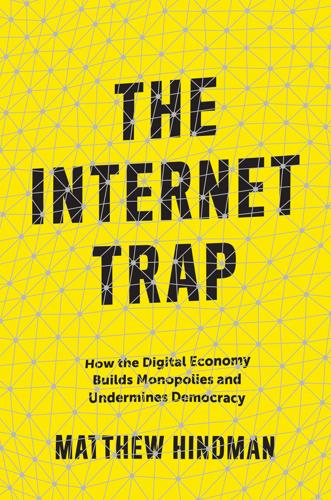
The Internet Trap: How the Digital Economy Builds Monopolies and Undermines Democracy
by
Matthew Hindman
Published 24 Sep 2018
Pages views are most helpful when used comparatively, in understanding the relative audience that two sites have. The page-view numbers we are most interested in are fractional—the portion of the total online audience, or the portion of news traffic, or the portion of just local news traffic. It should be remembered that each of these fractions has a very large denominator. One disadvantage of page views as a metric, however, is that they can be impacted by site architecture. Changes in the page layouts can increase—or decrease—the number of page views recorded. Some news sites are notorious for spreading short articles or photo slide shows over multiple pages in an attempt to maximize page views.
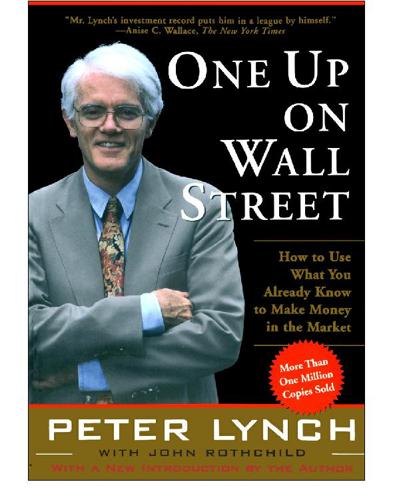
One Up on Wall Street
by
Peter Lynch
Published 11 May 2012
On the other hand, if interest rates go in a direction that works against the bondholders, the bondholders are stuck with the bonds. Since there’s very little in the corporate bond business that isn’t callable, you’re advised to buy Treasuries if you hope to profit from a fall in interest rates.) LIBERATING THE PASSBOOKS Traditionally bonds were sold in large denominations—too large for the small investor, who could only invest in debt via the savings account, or the boring U.S. savings bonds. Then the bond funds were invented, and regular people could invest in debt right along with tycoons. After that, the money-market fund liberated millions of former passbook savers from the captivity of banks, once and for all.
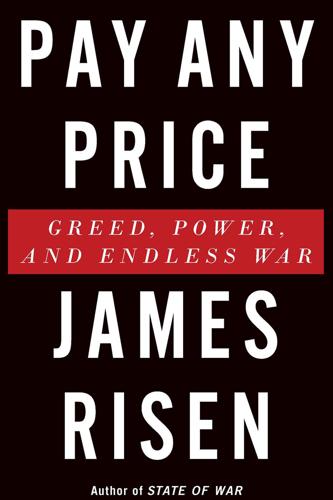
Pay Any Price: Greed, Power, and Endless War
by
James Risen
Published 15 Feb 2014
All told, he deposited more than $440,000 in fresh $100 bills. Fuller was a pilot, not a money laundering genius. He didn’t realize that repeatedly depositing large amounts of cash in amounts just below the $10,000 limit is considered suspicious by banks, especially when the money is all in uncirculated, large-denomination bills. Fuller was arrested. Yet there was not enough evidence for federal prosecutors to prove that Fuller had obtained his money illegally through his work in Iraq. He agreed only to plead to purposefully seeking to structure deposits in federally insured financial institutions to avoid the $10,000 limit.
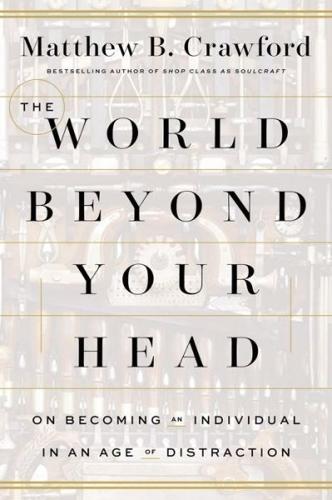
The World Beyond Your Head: On Becoming an Individual in an Age of Distraction
by
Matthew B. Crawford
Published 29 Mar 2015
The speed of play has been accelerated with some fairly straightforward innovations over the years, such as replacing the mechanical pull handle of slot machines with an electronic push button (which you can rest your hand on constantly), which was followed by the mechanically spinning reels being replaced with a video screen. Once the machines accepted bills (in large denominations), one no longer had to insert coins laboriously into the machine; merely eliminating this fumbling generated a 30 percent increase in the amount of money played. Experienced video poker players (you may have seen one hunched at a terminal at a bar or gas station, waving fingers over a touch screen in a blur that rivals the best typists) can complete up to 1,200 hands per hour; the rate of play on video slots is similar, up from about 300 games per hour a couple of decades ago.
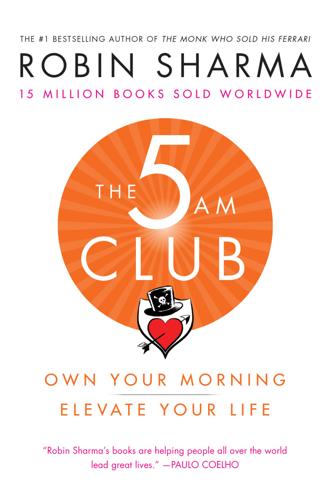
The 5 AM Club: Own Your Morning. Elevate Your Life.
by
Robin Sharma
Published 4 Dec 2018
Relate peacefully, as much as possible, with everyone. Even one enemy is an enemy too many. Pass through life gracefully, taking the high road when conflict shows up. Should someone do you wrong, let karma do the dirty work. And let a world-class life be your revenge. Clipped to the sixth letter in the metal safe box was paper money of a large denomination. It had been folded into a triangle, for some cryptic reason unknown to the entrepreneur and the artist. This letter was longer than the others. It said: The Billionaire’s Maxim #6 Money Is the Fruit of Generosity, Not Scarcity. Be not misled by the dominant philosophy of the world. Poverty is the consequence of an inner condition, not an outer situation.

Practical Doomsday: A User's Guide to the End of the World
by
Michal Zalewski
Published 11 Jan 2022
Of course, all kinds of valuable physical goods can be used to the same effect, but none are accepted as widely as cash. Alas, because of its utility in evading taxes and court judgments, many governments would rather have this antiquated payment instrument go away. In the United States, many large-denomination bills, such as the $1,000 banknote, were effectively removed from circulation and are probably not coming back. Any commercial cash transactions over $10,000 need to be reported to the Internal Revenue Service on Form 8300 too. Meanwhile, in parts of Europe, it’s flat out illegal to use paper money for most transactions in excess of a threshold as low as €1,000.17 As the percentage of underbanked populations around the world is shrinking rapidly, some economists and policymakers are openly talking about a cashless future where no transaction can escape government oversight.

The Road to Ruin: The Global Elites' Secret Plan for the Next Financial Crisis
by
James Rickards
Published 15 Nov 2016
The banks had no choice but to shut down access to cash and credit until their status was clarified. ATMs stopped providing cash to Greek cardholders (travelers with non-Greek debit cards could get some cash at Athens International Airport). Greek credit cards were declined by merchants. Greeks drove to neighboring countries and returned with bags full of large-denomination euro notes. The Greek economy reverted to cash-and-carry and quasi-barter almost overnight. Coming so soon after the Cyprus debacle, the Greek version of ice-nine served as a cautionary tale. Depositors now realized their money in the bank was not money, and not theirs. Their so-called money was actually a bank liability and could be frozen at any time.
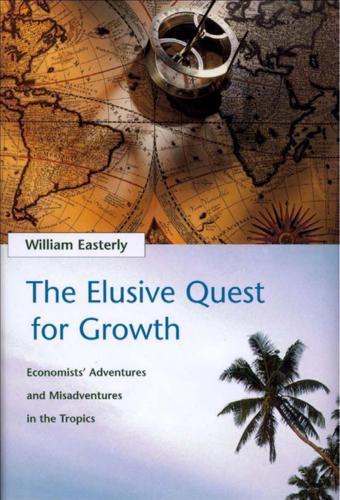
The Elusive Quest for Growth: Economists' Adventures and Misadventures in the Tropics
by
William R. Easterly
Published 1 Aug 2002
This serious offense required a trip to the station house (my Mexican friends told me, ”Never let them get you to the station house”). I offered to pay the fine for my outrageous offense on the spot, and that resolved matters. (I’m embarrassedto tell you howmuchI paid for the bribe. I got caught with only large denomination notes on me.) After that I developed several techniques for evading police sting operations. I continued toact like an idiot as far as comprehensionof Spanish went whenever the policeman was on foot. The next time I encountered a motorized policeman, I simply refused to pull over and kept driving until I got to the private university I was going to.
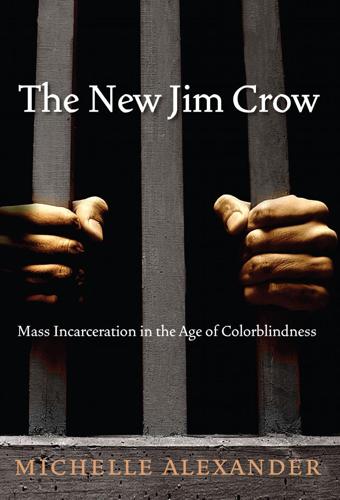
The New Jim Crow: Mass Incarceration in the Age of Colorblindness
by
Michelle Alexander
Published 24 Nov 2011
However, as legal scholar David Cole has observed, “in practice, the drug-courier profile is a scattershot hodgepodge of traits and characteristics so expansive that it potentially justifies stopping anybody and everybody.”28 The profile can include traveling with luggage, traveling without luggage, driving an expensive car, driving a car that needs repairs, driving with out-of-state license plates, driving a rental car, driving with “mismatched occupants,” acting too calm, acting too nervous, dressing casually, wearing expensive clothing or jewelry, being one of the first to deplane, being one of the last to deplane, deplaning in the middle, paying for a ticket in cash, using large-denomination currency, using small-denomination currency, traveling alone, traveling with a companion, and so on. Even striving to obey the law fits the profile! The Florida Highway Patrol Drug Courier Profile cautioned troopers to be suspicious of “scrupulous obedience to traffic laws.”29 As Cole points out, “such profiles do not so much focus an investigation as provide law enforcement officials a ready-made excuse for stopping whom-ever they please.”30 The Supreme Court has allowed use of drug-courier profiles as guides for the exercise of police discretion.
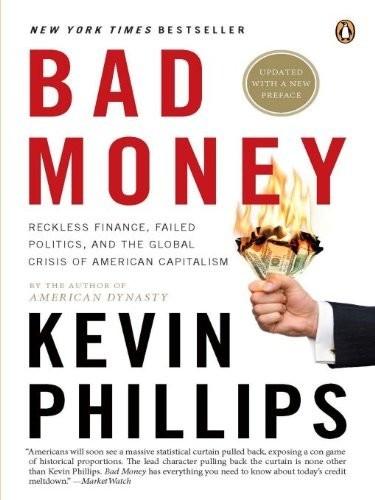
Bad Money: Reckless Finance, Failed Politics, and the Global Crisis of American Capitalism
by
Kevin Phillips
Published 31 Mar 2008
But although Bush appealed to these regions as a cultural outsider, he evoked neither economic populism nor its memories. What counted much more was culture and religion—not just his own born-again beliefs but his frequent faith-based rhetoric and his links to well-known conservative preachers, religious Right groups, and large denominations like the Southern Baptist Convention and the Pentecostal Assemblies of God. Those ties, in turn, had been reinforced by late-1990s domestic politics—the dislike for Bill Clinton and his moral values by some 70 to 80 percent of southern white churchgoers—and even more by global events. These trends accelerated with the evangelical and fundamentalist focus on the Middle East spurred by the collapse of the Soviet Union, the Gulf War of 1991, the demonization of Iraq’s Saddam Hussein, the late-decade launch of the Left Behind book series about the imminent end-time, the sense of the great biblical battleground taking center stage again with the approach of the millennium, and then the good-versus-evil confrontation framed by the events of 9/11.

The Blockchain Alternative: Rethinking Macroeconomic Policy and Economic Theory
by
Kariappa Bheemaiah
Published 26 Feb 2017
Owing to mistrust in banks, financial crises, threats of negative interest rates, and illegal operations (especially terrorism), the circulation of cash has actually increased in Japan, Switzerland, the EU, and the UK (Tett, 2016). But the future seems poised to change some parts of this trend. Growing dangers of terrorism and crime are urging policy makers to remove large denomination bills. As of May 2016, the ECB has stopped the production and issuance of the €500 banknote in an attempt to address these illegal activities. But apart from the reasons stated by Haldane and the motivations of the ECB, there are other reasons why moving to a cashless system could be beneficial to society.
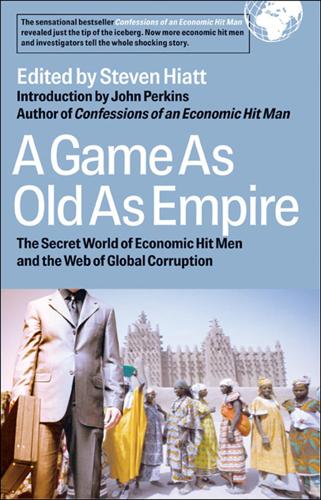
A Game as Old as Empire: The Secret World of Economic Hit Men and the Web of Global Corruption
by
Steven Hiatt; John Perkins
Published 1 Jan 2006
All three factors combined to encourage Third World officials and wealthy elites to move a significant share of their private wealth into offshore foreign assets, even while their own governments were borrowing more heavily abroad than ever before (see Figure 4). Figure 4 Flight Wealth versus Foreign Debt, 1975-2003 (Billions of Dollars, Low- and Middle-Income Countries) Part of the resulting flight wave took the form of large amounts of “mattress money” hoarded by residents of Third World countries in strong currencies and large denominations—especially dollars, Swiss francs, Deutschmarks, British pounds, and, after 2002, 100, 200, and 500 euro notes. By 2006, for example, the total stock of U.S. currency was $912 billion, at least two-thirds of which was held offshore, especially in developing countries with a history of devaluations.

Extreme Economies: Survival, Failure, Future – Lessons From the World’s Limits
by
Richard Davies
Published 4 Sep 2019
The US’s indigenous Yoruk people, based in northern California, valued woodpecker scalps highly, and used them in head-dresses. The scalps became a form of currency: the large pileated woodpecker was worth more than the small acorn woodpecker, giving the tribe a currency that had small and large denominations. Others have used any light, durable and divisible commodity: salt was used in Rome, ancient China and modern Ethiopia; the Aztec kingdom of Central America used chocolate (cacao beans). Prisons have a rich tradition of inventing informal currencies too. In London’s Cold Bath Fields prison the ‘vast illicit commerce’ of the nineteenth century was lubricated by using cigarette papers as currency.

The Ten Million Dollar Getaway: The Inside Story of the Lufthansa Heist
by
Doug Feiden
Published 1 Sep 2014
Only an idiot would try to deal jewelry and securities and canceled traveler’s checks from Bolivia by himself—what if he sold to the wrong person? For a haul of any size, he’s got to have an excellent fence. And that is where the mob has him. He’s paid in five minutes, and he’s paid in clean, untraceable, large-denomination bills, and his worries are over. It’s generally considered a smart move among thieves. A lot of them do it free-lance, but when they’re connected to a big shot, they don’t have to, and they’re crazy if they do. It’s a form of protection. If they ever need a favor, or if there’s ever a big score again, they’ll probably get it.)
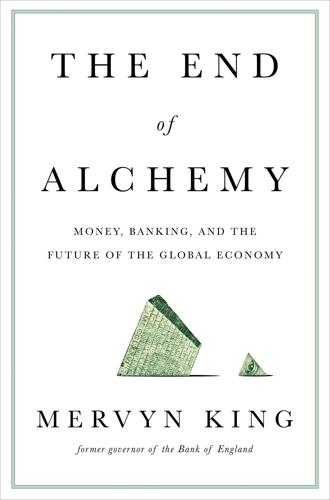
The End of Alchemy: Money, Banking and the Future of the Global Economy
by
Mervyn King
Published 3 Mar 2016
Could innovations in information technology make money redundant in respect of those two roles? We no longer need cash to buy ‘stuff’ and even the use of cheques to make payments has been rapidly declining. We use electronic transfers instead. So should we stop issuing paper money? There would be some advantages. A large proportion of banknotes, especially those of large denominations, are used for illegal transactions, both to evade tax and for other criminal activities. In the United States, over $4000 in notes and coin circulate for every man, woman and child.33 In Japan, the figure is almost double that. More than 75 per cent of those holdings are in the form of notes of the largest denomination, the $100 bill and the ¥10,000 note.
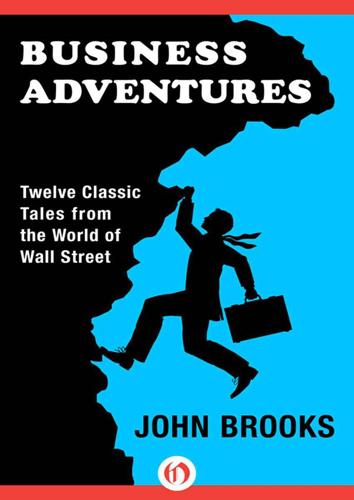
Business Adventures: Twelve Classic Tales From the World of Wall Street
by
John Brooks
Published 6 Jul 2014
There is little reason to believe that at the beginning of his buying campaign he had any intention of trying for a corner; it seems more likely that his announced motive—the unassailable one of supporting the price of the stock in order to protect his own investment and that of other Piggly Wiggly stockholders—was all he had in mind. In any case, he took on the bears with characteristic zest, supplementing his own funds with a loan of about ten million dollars from a group of bankers in Memphis, Nashville, New Orleans, Chattanooga, and St. Louis. Legend has it that he stuffed his ten million-plus, in bills of large denomination, into a suitcase, boarded a train for New York, and, his pockets bulging with currency that wouldn’t fit in the suitcase, marched on Wall Street, ready to do battle. He emphatically denied this in later years, insisting that he had remained in Memphis and masterminded his campaign by means of telegrams and long-distance telephone calls to various Wall Street brokers.

How Asia Works
by
Joe Studwell
Published 1 Jul 2013
The two big state institutions, Philippine National Bank and Development Bank of the Philippines, wrote down their assets (consisting mostly of loans) by 67 per cent and 86 per cent respectively after years of making ‘behest’ loans to Marcos’s cronies. In 1993, the government moved debts of USD12 billion from the balance sheet of the central bank to that of the treasury. All this was paid for, in large part, by a tripling of domestic government debt in the late 1980s. The debt was deliberately issued in large-denomination bonds, which were beyond the reach of ordinary citizens who continued to keep their funds in the banking system, usually at negative real rates of interest. Banks recovered by borrowing for free from the public and investing the money in high-yield national debt.57 It was much like Park Chung Hee’s interest moratorium in 1972, except that in the Philippines the banking system produced zero developmental upside.

More: The 10,000-Year Rise of the World Economy
by
Philip Coggan
Published 6 Feb 2020
And once banks receive a deposit, they must lend out the money at a higher rate if they are to make a profit. In the 1970s, the lucky recipients of much of that money were Latin American governments, at a time when they were struggling to balance their budgets. In 1970, total Latin American debt was $29bn; by 1982, it was $327bn.34 This debt was largely denominated in dollars, and thus subject to shifts in US interest rates and changes in exchange rates. As the Fed tightened policy and economies fell into recession, the debt clearly became unsustainable. In 1982, Mexico declared that it could not service its $80bn of debts. Fifteen other Latin American countries followed suit, along with 11 other developing nations.
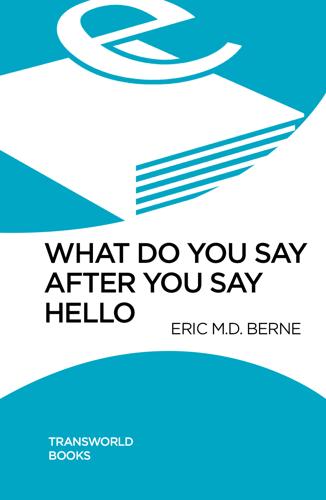
What Do You Say After You Say Hello?
by
Eric Berne
Published 2 Jan 1975
The Child paranoid collects counterfeit wrongs and says ‘See what they did to me,’ while the Parent paranoid collects counterfeit rights, and says ‘They can’t do this to me.’ In fact there are ‘check raisers’ as well as true counterfeiters among paranoids. Those with delusions can pick up very small trading stamps here and there and raise each of them into a very large denomination so as to get a large payoff quickly. Those with voice hallucinations can manufacture trading stamps ad infinitum right out of their heads.4 9. It is just as hard for a patient to give up a lifelong collection of hard-earned psychological trading stamps as it would be for a housewife to burn her commercial ones.
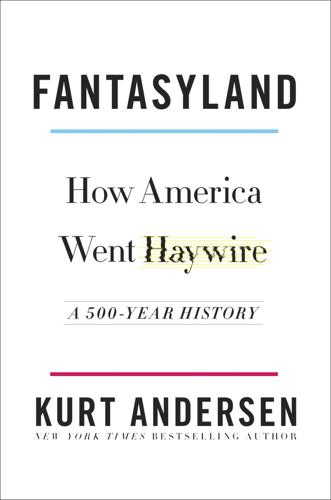
Fantasyland: How America Went Haywire: A 500-Year History
by
Kurt Andersen
Published 4 Sep 2017
Soon seven thousand charismatics a week were attending services, and the church started bursting forth spores, reproducing by the hundreds across the country. In the American Protestant way, these new churches were really franchises, sharing a brand—the name, the groovy music, and the belief that God is still granting ordinary folks magical superpowers. And because Calvary Chapel, a large denomination, was created in America during and after the 1960s, it insists it’s “nondenominational”—like American politicians who began insisting at the same time they’re antigovernment. One of those Calvary spores sprouted nearby, in a fancier Orange County town. Its minister, John Wimber, was not just targeting unchurched young SoCal baby boomers: he was their cool older brother, a bearded rock ’n’ roll keyboardist who’d played with the Righteous Brothers and been a Quaker pastor before turning evangelical and then neo-Pentecostal.
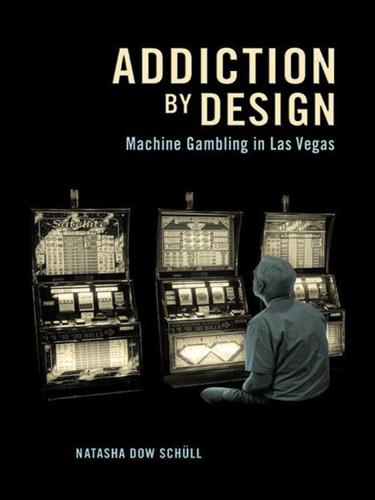
Addiction by Design: Machine Gambling in Las Vegas
by
Natasha Dow Schüll
Published 15 Jan 2012
“This didn’t just slow down the play,” remembered slot machine pioneer Warren Nelson in 1994, “it kind of suggested a closure, an end to the game … it tempted the customer to cease the play and walk out the door with his winnings.”15 Since hoppers could dispense up to two hundred coins into the machine’s payout tray, they increased “the probability that those coins would be played back into the machine” and at the same time ensured that gamblers could gather the wagering momentum critical to the flow of their play experience. The introduction of bill acceptors to gambling machines further sped up play, allowing players to insert bills of large denomination and draw from credits displayed on a digital meter rather than stop to feed coins in one at a time (see fig. 2.1). Dematerializing money into an immediately available credit form not only disguised its actual cash value and thus encouraged wagering, it also mitigated the revenue-compromising limitations of human motor capacities by removing unwieldy coins from the gambling exchange.
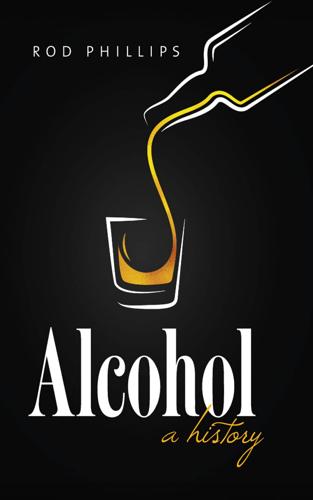
Alcohol: A History
by
Rod Phillips
Published 14 Oct 2014
When the British introduced money into the Nigerian economy, they found that the native population was already prepared to grasp the principle that there were 12 pennies in a shilling.13 Even so, the use of money rather than gin was resisted. Gin was so cheap that it was useful as payment for small items, while the coins initially put into circulation were of too large denomination. (The authorities eventually issued a coin worth a tenth of a penny.) Alcohol was a tangible asset with visible exchange value, not like a metal disc or a piece of flimsy paper that was merely reputed to represent some value and could be easily lost or stolen.14 In a sense, the prevalence of alcohol as currency might have been a deterrent to alcohol consumption.

Manias, Panics and Crashes: A History of Financial Crises, Sixth Edition
by
Kindleberger, Charles P.
and
Robert Z., Aliber
Published 9 Aug 2011
Stock prices and real estate prices increased sharply in three of the Nordic countries in the late 1980s; with a three-fold increase in Norway and five-fold increases in Sweden and Finland.14 The Kipper- und Wipperzeit This financial crisis occurred with metallic money; credit from banks or other lenders was not involved. Princes, abbots, bishops, even the Holy Roman Emperor debased the subsidiary coinage used in daily transactions (but not gold and silver coin of large denominations) by raising the denomination of existing coins, substituting base for good metals, and reducing the metallic content of coins to extract more seignorage to prepare for the Thirty Years’ War that broke out in 1618. Debasement was limited at first to their own territories. Some entrepreneurial spirit then found that it was more profitable to take bad coins across the borders into neighboring principalities to exchange for good coins with ignorant common people; the good coins were then brought home and debased.
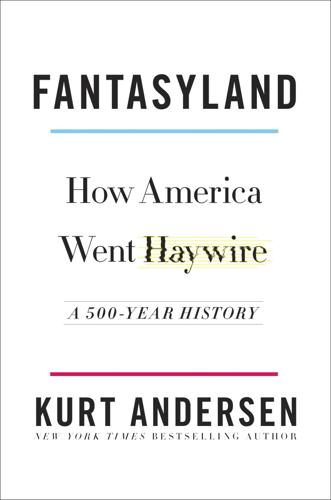
Fantasyland
by
Kurt Andersen
Published 5 Sep 2017
Soon seven thousand charismatics a week were attending services, and the church started bursting forth spores, reproducing by the hundreds across the country. In the American Protestant way, these new churches were really franchises, sharing a brand—the name, the groovy music, and the belief that God is still granting ordinary folks magical superpowers. And because Calvary Chapel, a large denomination, was created in America during and after the 1960s, it insists it’s “nondenominational”—like American politicians who began insisting at the same time they’re antigovernment. One of those Calvary spores sprouted nearby, in a fancier Orange County town. Its minister, John Wimber, was not just targeting unchurched young SoCal baby boomers: he was their cool older brother, a bearded rock ’n’ roll keyboardist who’d played with the Righteous Brothers and been a Quaker pastor before turning evangelical and then neo-Pentecostal.
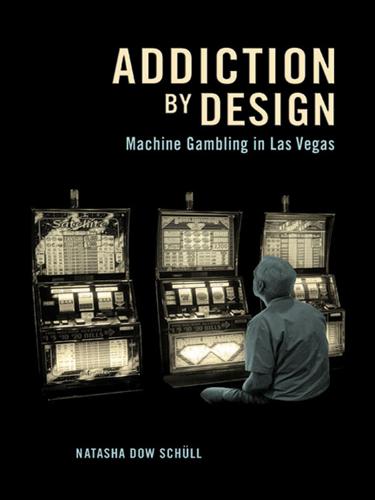
Addiction by Design: Machine Gambling in Las Vegas
by
Natasha Dow Schüll
Published 19 Aug 2012
“This didn’t just slow down the play,” remembered slot machine pioneer Warren Nelson in 1994, “it kind of suggested a closure, an end to the game … it tempted the customer to cease the play and walk out the door with his winnings.”15 Since hoppers could dispense up to two hundred coins into the machine’s payout tray, they increased “the probability that those coins would be played back into the machine” and at the same time ensured that gamblers could gather the wagering momentum critical to the flow of their play experience. The introduction of bill acceptors to gambling machines further sped up play, allowing players to insert bills of large denomination and draw from credits displayed on a digital meter rather than stop to feed coins in one at a time (see fig. 2.1). Dematerializing money into an immediately available credit form not only disguised its actual cash value and thus encouraged wagering, it also mitigated the revenue-compromising limitations of human motor capacities by removing unwieldy coins from the gambling exchange.
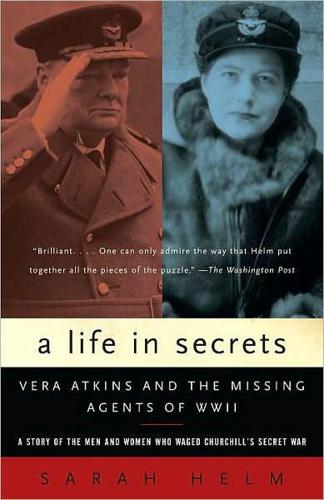
A Life in Secrets
by
Sarah Helm
Published 1 Jan 2005
The British used cafés openly as letterboxes and meeting places, not thinking that they would be watched, but Kieffer had made sure he had a man in every bar in Paris. Agents could be spotted wearing brogue shoes of a style rarely seen in France or carrying obviously fake ration cards. And the British agents used wads of brand-new large-denomination notes to pay small bills, immediately drawing attention. Buckmaster, after reading some of these stories, wrote sarcastically on one report: “very interesting!” Rose Cordonnier, who cleaned the fifth floor of 84 Avenue Foch, where the prisoners were held, and was the mistress of one of Kieffer's aides, had been interrogated for hours in the hope that she would identify who had been held there and when.
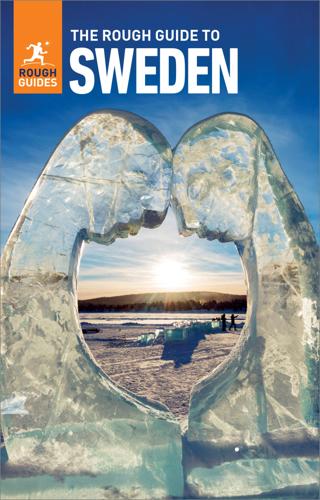
The Rough Guide to Sweden (Travel Guide eBook)
by
Rough Guides
Published 1 Nov 2019
Mastercard, Visa, American Express and Diners Card are accepted everywhere for goods or cash. Traveller’s cheques are a safe and simple way of carrying your money, although there can be a hefty commission when you come to change them. Some places charge per cheque, others per transaction, so it’s common sense to take large denominations with you, or to try to change as much as you feel you can handle in one go. Banks have standard exchange rates, but commissions can vary enormously. The best place to change money is at the yellow Forex offices ( forex.se), which offer more kronor for your currency though also charge commission.

Enemies and Neighbours: Arabs and Jews in Palestine and Israel, 1917-2017
by
Ian Black
Published 2 Nov 2017
‘I saw people without arms,’ one eyewitness said. ‘I saw a person with their stomach hanging open. I saw a ten-year-old boy breathe his last breath.’ The next day fifteen more people died in a Hamas bus bombing in Haifa. The driver remembered afterwards that a Palestinian passenger had paid his fare with a large-denomination banknote and not waited for his change before moving to the rear of the vehicle to detonate his device – a chilling detail from what was becoming a frighteningly familiar phenomenon. (Police were reportedly investigating a gambling ring that was taking bets on the location of the next suicide attack.)

Crashed: How a Decade of Financial Crises Changed the World
by
Adam Tooze
Published 31 Jul 2018
Axel Weber, the head of the Bundesbank, spoke of a nuclear meltdown (Kernschmelze). Somewhat melodramatically, Germany’s bank regulator, Jochen Sanio, invoked Apocalypse Now.78 What really worried Berlin were rumors that German savers were panicking. As cash withdrawals spiked, the Bundesbank registered unprecedented demand for large-denomination euro notes. Abruptly, less than twenty-four hours after returning from Paris, Merkel decided that she must make a statement. It was all Steinbrück could do to persuade her that she should not do it entirely alone.79 On the afternoon of Sunday, October 5, Merkel and Steinbrück went before the TV cameras.

Lonely Planet Peru
by
Lonely Planet
In addition, there are bimetallic S2 and S5 coins with a copper-colored center inside a silver-colored ring. US dollars are accepted by many tourist-oriented businesses, though you’ll need nuevos soles to pay for local transportation, meals and other incidentals. Counterfeit bills (in both US dollars and nuevo soles) often circulate in Peru. Merchants question both beat-up and large-denomination bills. Consumers should refuse them too. To detect fakes check for a sheer watermark and examine a metal strip crossing the note that repeats Peru in neat, not misshapen, letters. Colored thread, holographs and writing along the top of the bill should be embossed, not glued on. Changing Money The best currency for exchange is the US dollar, although the euro is accepted in major tourist centers.
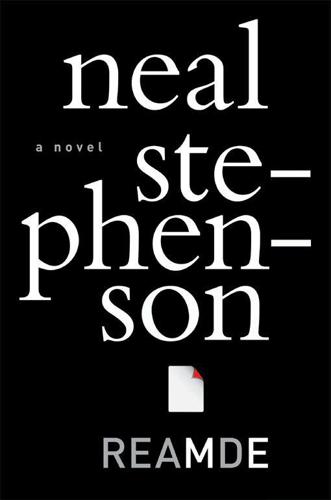
Reamde
by
Neal Stephenson
Published 19 Sep 2011
Sokolov now moved up and sat in the seat next to the driver. He had his bag with him. He turned on his flashlight and put it in his mouth like a cigar, then shone it down into the bag, which he had zipped open. It was stuffed with a miscellany of junk, but the predominant color was the queasy red/magenta of large-denomination Chinese currency. Much of it was crumpled loose bills, but Sokolov stirred through these and then pulled out a wrapped brick about one inch thick. He let the light shine on it and glanced up at the driver to make sure that it had been noticed. Then he pulled out a plastic sack—a white laundry bag blazoned with the logo of a luxury hotel.
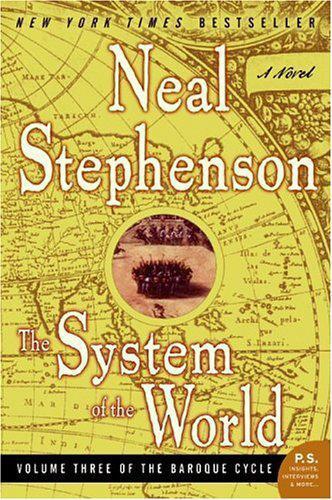
The system of the world
by
Neal Stephenson
Published 21 Sep 2004
The stupidest imaginable way of handling it would have been to gather together all of the pennies in the countryside, from millions of tributary farmsteads, and physically transport them into London; let the wagon-trains feed and water while the gentlefolk carried out their Intercourse; and then load the coins back onto the wagons and haul them back out to the country again. And perhaps that was how they did it in some countries. But England had obstinately refused to mint coins of large denominations—which was to say, gold coins—in large enough quantities to be actually useful. Anyway, such coins were too enormous for small transactions on farms. Those that were minted, tended to be snapped up by London merchants, and used for overseas trade. The true coin of England, the one ordinary folk used, had always been the silver penny.

The Defence of the Realm
by
Christopher Andrew
Published 2 Aug 2010
Del Pozo greatly simplified MI5 surveillance by writing to GW, the double agent whom the Abwehr believed was a fanatical Welsh nationalist recruited for them by SNOW. With the agreement of the Security Service, GW met del Pozo on 10 October at his flat in Athenaeum Court, Piccadilly. To his surprise, del Pozo handed him a talcum-powder tin containing £3,500 in large-denomination banknotes, over £100,000 at current values and probably the largest sum yet handed to a twentiethcentury British agent (other than funds intended for the Communist Party and other organizations). Part of this large sum, GW was told, was for his own personal use; part was to be held in safe-keeping for del Pozo and returned to him as and when required.

Southeast Asia on a Shoestring Travel Guide
by
Lonely Planet
Published 30 May 2012
Make sure your ATM and credit cards are not going to expire while you are away; contact your bank at least a month ahead of time to allow enough time for replacement cards to be issued. When exchanging money, shop around for the best exchange rate. Bring cash in crisp, untorn bills and a variety of denominations. Money changers in Myanmar and Indonesia will reject old or ripped bills. Get your travellers cheques in large denominations of US dollars (US$100 or US$50) to avoid per-cheque commission fees. Record which travellers cheques you’ve cashed, and keep this information separate from your money so that you can file a claim in the case of theft of loss. Personal Belongings ❑Clothes Southeast Asia is hot, very hot, so bring a week’s worth of lightweight, light-coloured, breathable clothes that can be washed easily and match everything.

Spain
by
Lonely Planet Publications
and
Damien Simonis
Published 14 May 1997
The advantage of travellers cheques, of course, is that they protect your money because they can be replaced if lost or stolen. Visa, Amex and Travelex are widely accepted brands with (usually) efficient replacement policies. Remember to take along your passport when you cash travellers cheques. Get most of your cheques in fairly large denominations (the equivalent of €100 or more) to save on any per-cheque commission charges. If you lose your Amex cheques, call a 24-hour freephone number (900 994426). For Visa cheques call 900 948973 and for MasterCard cheques call 900 948971. It’s vital to keep your initial receipt, and a record of your cheque numbers and the ones you have used, separate from the cheques themselves.

Italy
by
Damien Simonis
Published 31 Jul 2010
Travellers Cheques Traditionally a safe way to carry money and possibly not a bad idea as a backup, travellers cheques have been outmoded by plastic. Various readers have reported having trouble changing travellers cheques in Italy and it seems most banks apply hefty commissions, even on cheques denominated in euros. Visa, Travelex and Amex are widely accepted brands. Get most of your cheques in fairly large denominations to save on per-cheque commission charges. Amex exchange offices do not charge commission to exchange travellers cheques. It’s vital to keep your initial receipt, along with a record of your cheque numbers and the ones you have used, separate from the cheques. Take along your passport as identification when you go to cash travellers cheques.